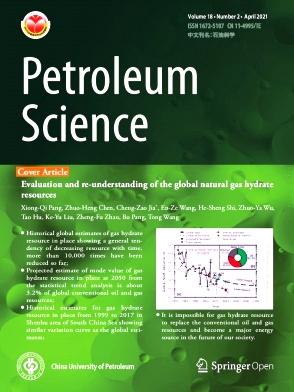Dynamic evolution mechanism of the fracturing fracture system—Enlightenments from hydraulic fracturing physical experiments and finite element numerical simulation
IF 6
1区 工程技术
Q2 ENERGY & FUELS
引用次数: 0
Abstract
This study aims to elucidate the dynamic evolution mechanism of the fracturing fracture system during the exploration and development of complex oil and gas reservoirs. By integrating methods of rock mechanical testing, logging calculation, and seismic inversion technology, we obtained the current in-situ stress characteristics of a single well and rock mechanical parameters. Simultaneously, significant controlling factors of rock mechanical properties were analyzed. Subsequently, by coupling hydraulic fracturing physical experiments with finite element numerical simulation, three different fracturing models were configured: single-cluster, double-cluster, and triple-cluster perforations. Combined with acoustic emission technology, the fracture initiation mode and evolution characteristics during the loading process were determined. The results indicate the following findings: (1) The extension direction and length of the fracture are significantly controlled by the direction of the maximum horizontal principal stress. (2) Areas with poor cementation and compactness exhibit complex fracture morphology, prone to generating network fractures. (3) The interlayer development of fracturing fractures is controlled by the strata occurrence. (4) Increasing the displacement of fracturing fluid enlarges the fracturing fracture length and height. This research provides theoretical support and effective guidance for hydraulic fracturing design in tight oil and gas reservoirs.
求助全文
约1分钟内获得全文
求助全文
来源期刊

Petroleum Science
地学-地球化学与地球物理
CiteScore
7.70
自引率
16.10%
发文量
311
审稿时长
63 days
期刊介绍:
Petroleum Science is the only English journal in China on petroleum science and technology that is intended for professionals engaged in petroleum science research and technical applications all over the world, as well as the managerial personnel of oil companies. It covers petroleum geology, petroleum geophysics, petroleum engineering, petrochemistry & chemical engineering, petroleum mechanics, and economic management. It aims to introduce the latest results in oil industry research in China, promote cooperation in petroleum science research between China and the rest of the world, and build a bridge for scientific communication between China and the world.
 求助内容:
求助内容: 应助结果提醒方式:
应助结果提醒方式:


